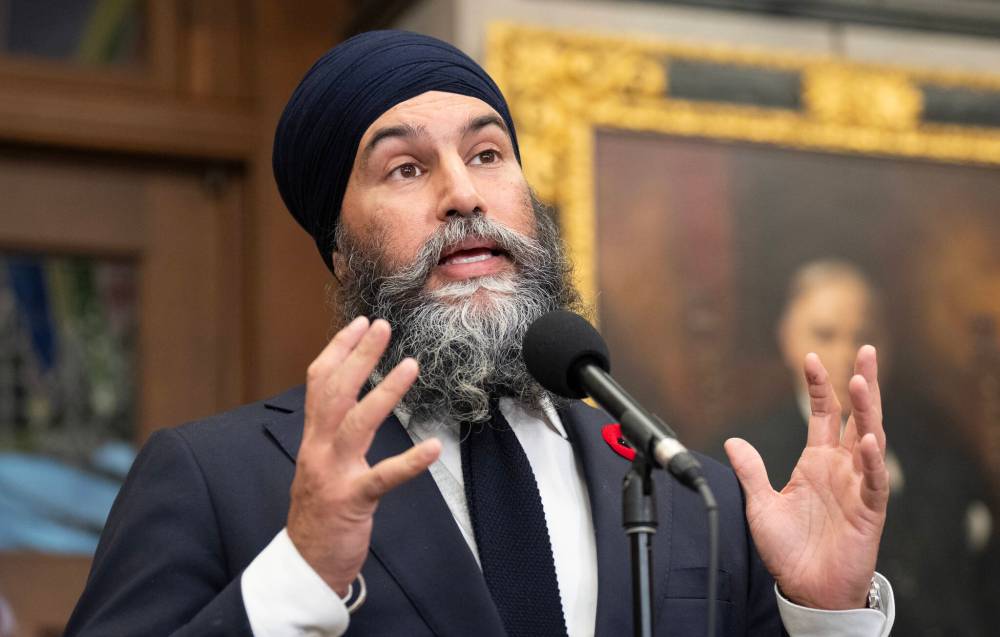The federal NDP — good work, but bad timing
Advertisement
Read this article for free:
or
Already have an account? Log in here »
To continue reading, please subscribe:
Monthly Digital Subscription
$0 for the first 4 weeks*
- Enjoy unlimited reading on winnipegfreepress.com
- Read the E-Edition, our digital replica newspaper
- Access News Break, our award-winning app
- Play interactive puzzles
*No charge for 4 weeks then price increases to the regular rate of $19.00 plus GST every four weeks. Offer available to new and qualified returning subscribers only. Cancel any time.
Monthly Digital Subscription
$4.75/week*
- Enjoy unlimited reading on winnipegfreepress.com
- Read the E-Edition, our digital replica newspaper
- Access News Break, our award-winning app
- Play interactive puzzles
*Billed as $19 plus GST every four weeks. Cancel any time.
To continue reading, please subscribe:
Add Free Press access to your Brandon Sun subscription for only an additional
$1 for the first 4 weeks*
*Your next subscription payment will increase by $1.00 and you will be charged $16.99 plus GST for four weeks. After four weeks, your payment will increase to $23.99 plus GST every four weeks.
Read unlimited articles for free today:
or
Already have an account? Log in here »
Hey there, time traveller!
This article was published 09/04/2025 (248 days ago), so information in it may no longer be current.
It must be particularly galling for federal NDP Leader Jagmeet Singh and stalwart supporters of his party. Fresh from one of the party’s most successful parliamentary periods — one where it used its support for the Liberals to strategically leverage popular programs such as pharmacare and dental care into existence — the NDP seems to be in close to free-fall, with voters fleeing their party to shore up Liberal fortunes in the current election.
Arguably, though, the NDP should be doing better — at least for having been the driving force behind some major programs that have gained wide popularity.
It’s important to remember just how the federal NDP got here, and what they managed to do with just 25 seats — sitting in fourth place in seat count, behind the Liberals, Conservatives and the Bloc Quebecois.

Adrian Wyld / The Canadian Press files
New Democratic Party Leader Jagmeet Singh
The NDP had campaigned on pharmacare in the 2021 federal election, but none of the other parties had campaigned on the idea.
The NDP made a supply and confidence agreement with the minority Liberal government of Justin Trudeau, committing to support the Liberals until June 2025. The NDP support meant the Liberal minority government couldn’t be toppled unexpectedly.
Many would argue it was a good trade — getting a much larger governing party to enact your policy goals.
Pharmacare had been a long-standing Liberal policy platform, but it had basically fallen off the Liberals’ radar. And federally funded dental care was basically lost in space before the NDP move.
To be fair, the Liberals did shepherd both programs through the House of Commons, and have promised future expansion of both dental care and pharmacare, but without the NDP, it’s unlikely the Liberals would have stepped up in the first place.
Others feel Pierre Poilievre’s Conservative Party threatens those social gains, even though Poilievre has committed to at least continuing the programs as they stand now.
In a fair world, the NDP would deserve credit from voters — and perhaps more seats in the House of Commons — for using their fourth-party status to actually deliver government policy from the other side of the parliamentary aisle.
But politics is rarely fair. It’s not uncommon to hear even people who should know better citing their support for the Liberals’ dental care plan, as if the NDP played no role at all.
To the government, apparently, go the spoils.
But there’s a bigger problem — the nature of the current federal election.
Natural NDP voters are currently faced with something of a devil’s bargain. While the end result of getting the programs in place may show the NDP’s value, voting for the NDP now risks splitting the support for left-wing parties in the House of Commons, something that could mean opening a path for Poilievre’s Conservatives to form government.
Regular NDP voters might not like the federal Liberals, but it’s fair to say they probably like the Conservatives a lot less.
Ironically, the resurgence of the federal Liberals from the electoral wilderness under Mark Carney makes it even harder for the NDP to pick up seats: if polling numbers showed a Conservative majority in the offing — as they did a few short months ago — the NDP might have had a better chance to pick up seats as the left-wing conscience of the House of Commons.
But in a one-two battle between the Tories and the Liberals for control of the House of Commons, NDP support will likely continue to slough away.
Proving once and for all that the best intentions — and even clear policy wins achieved from out of left field — don’t guarantee electoral success.


















